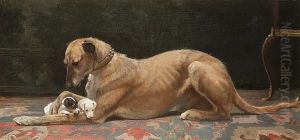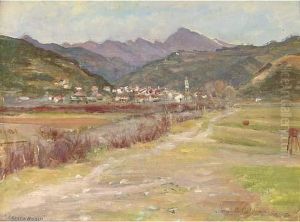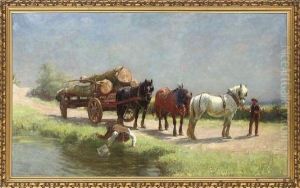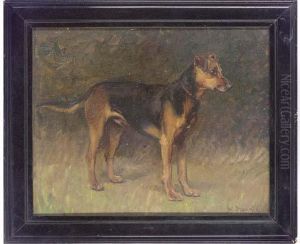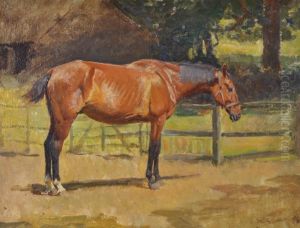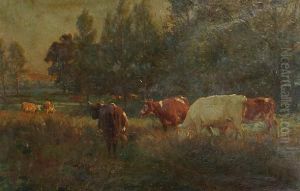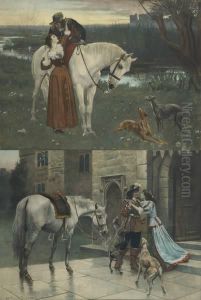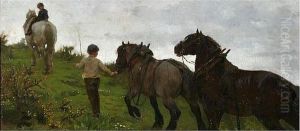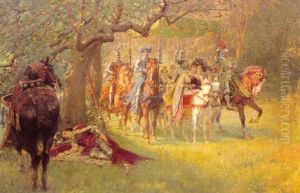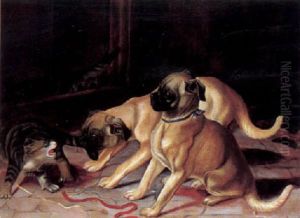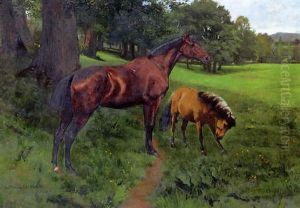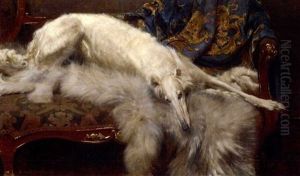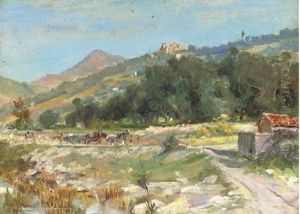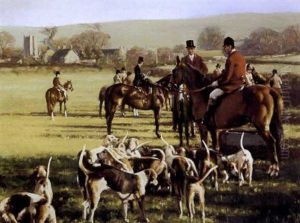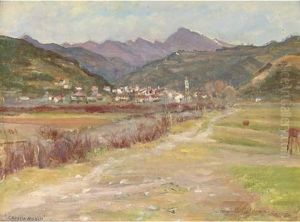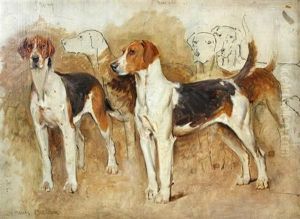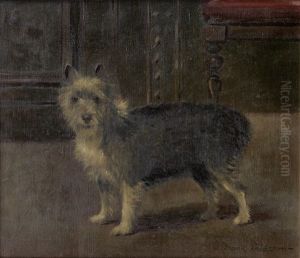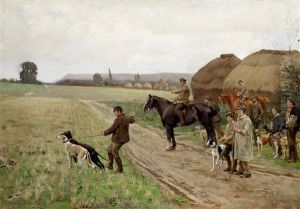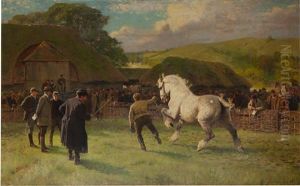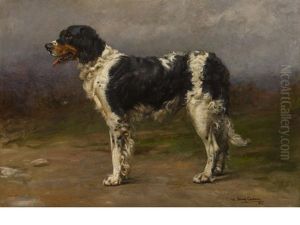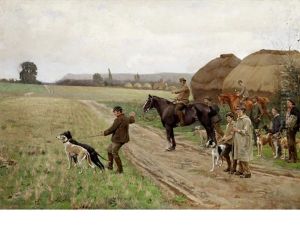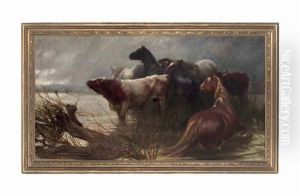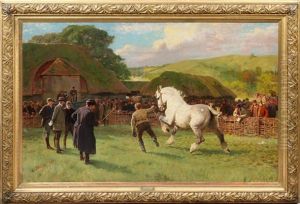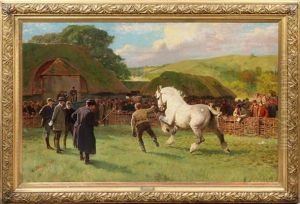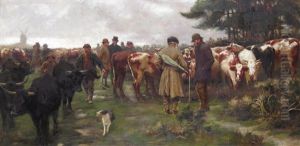William Frank Calderon Paintings
William Frank Calderon was a British painter born on May 2, 1865, in Poitiers, France. He was known for his animal paintings and his work as a teacher of art. His father, Philip Hermogenes Calderon, was a notable artist who played a significant role in his early art education. William's interest in art was cultivated from a young age, and he was exposed to the artistic community through his father's connections.
Calderon began his formal art education at St John's Wood Art School and later attended the Royal Academy Schools in London. His focus on animal painting was influenced by the work of Sir Edwin Landseer, a renowned animal painter of the Victorian era. Calderon's dedication to capturing the anatomy and movement of animals led him to study at the Veterinary College in London, which provided him with a deeper understanding of his subject matter.
Throughout his career, Calderon exhibited his work at various venues, including the Royal Academy and the Society of British Artists. His paintings often depicted domestic animals, such as horses, dogs, and cattle, with a particular emphasis on horses, which were a favorite subject. Calderon's attention to detail and his ability to convey the personality and mood of his animal subjects earned him recognition and praise from his contemporaries.
In addition to his painting career, Calderon was deeply involved in art education. In 1894, he co-founded the Calderon School of Animal Painting in Kensington, London, where he taught many students the specialized skills required to paint animals accurately. The school was a success and attracted students from around the world. Calderon's teaching methods emphasized the importance of studying live animals and understanding their structure and movement, principles he applied to his own work.
William Frank Calderon continued to paint and teach throughout his life. His contributions to the field of animal painting and his commitment to art education left a lasting impact on the art community. He passed away on October 7, 1943, leaving behind a legacy as a distinguished painter and educator. Many of his works are held in private collections and galleries, and he is remembered for his dedication to capturing the essence of the animal kingdom.
